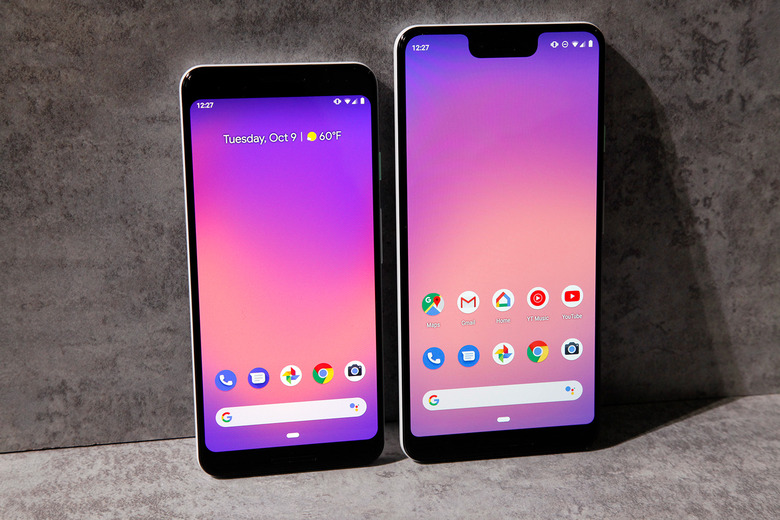Google's Mysterious Operating System That Will Replace Android Runs On The Pixel 3
One of the best things about Google's Android phones is that they're always going to be the first to get Android updates, and those updates are guaranteed for three years. The Pixel 3 phones will get software updates through 2021, which is a great reason to buy a brand new Pixel phone. But, as it turns out, the new Pixel phones can also run another Google OS — the one that keeps popping in leaks and reports, and the one that will likely "kill" Android.
Fuchsia, as it's currently called, represents Google vision for the future of smart devices. The operating system is being built from the ground up and will work on a variety of platforms, from smartphones, tablets, and laptops to smart speakers, IoT, and other smart gadgets. At least, that's the expectation, as Google is yet to announce it. If all goes well, Fuchsia will one day replace Android and Chrome OS, while retaining support for Android apps.
Even though we saw an early Fuchsia UI in previous leaks, and the software was able to boot on several devices, it can't really be used in place of another operating system at the moment. That's why, even though it's exciting to hear that the Pixel 3 can run Fuchsia, it's not like you'll be able to use it in place of Android.
As 9to5Google reports, an indie developer ran Fuchsia on the Pixel 3 XL. We're in the very early days of booting Fuchsia on Pixel phones, so don't try to do this at home. This is what you'd get if you did, though:
This includes booting the Zircon kernel (the absolute minimum software needed to run a device) via fastboot, and displaying the Zircon virtual console (think like a command line) on the Pixel 3 XL screen. This console is the only UI though, as it doesn't tap into any of the other layers of Fuchsia yet. There's also no way to interact with the virtual console, as there's no touch or USB support of any kind.
However, this particular evolution of Fuchsia is still impressive. After all, come the first commercial Fuchsia release, which isn't expected for another few years, the Pixel 3 and Pixel 3 XL might be able to run the OS right away. Also, this could be a sign that other relatively new Android devices might one day be compatible with the new operating system, as long as third-party developers are willing to put in the hard work.
The developer who made it happen is Zhuowei Zhang, who may be known to Minecraft fans for creating a tool that lets you use shaders and modes in Minecraft Pocket Edition.
